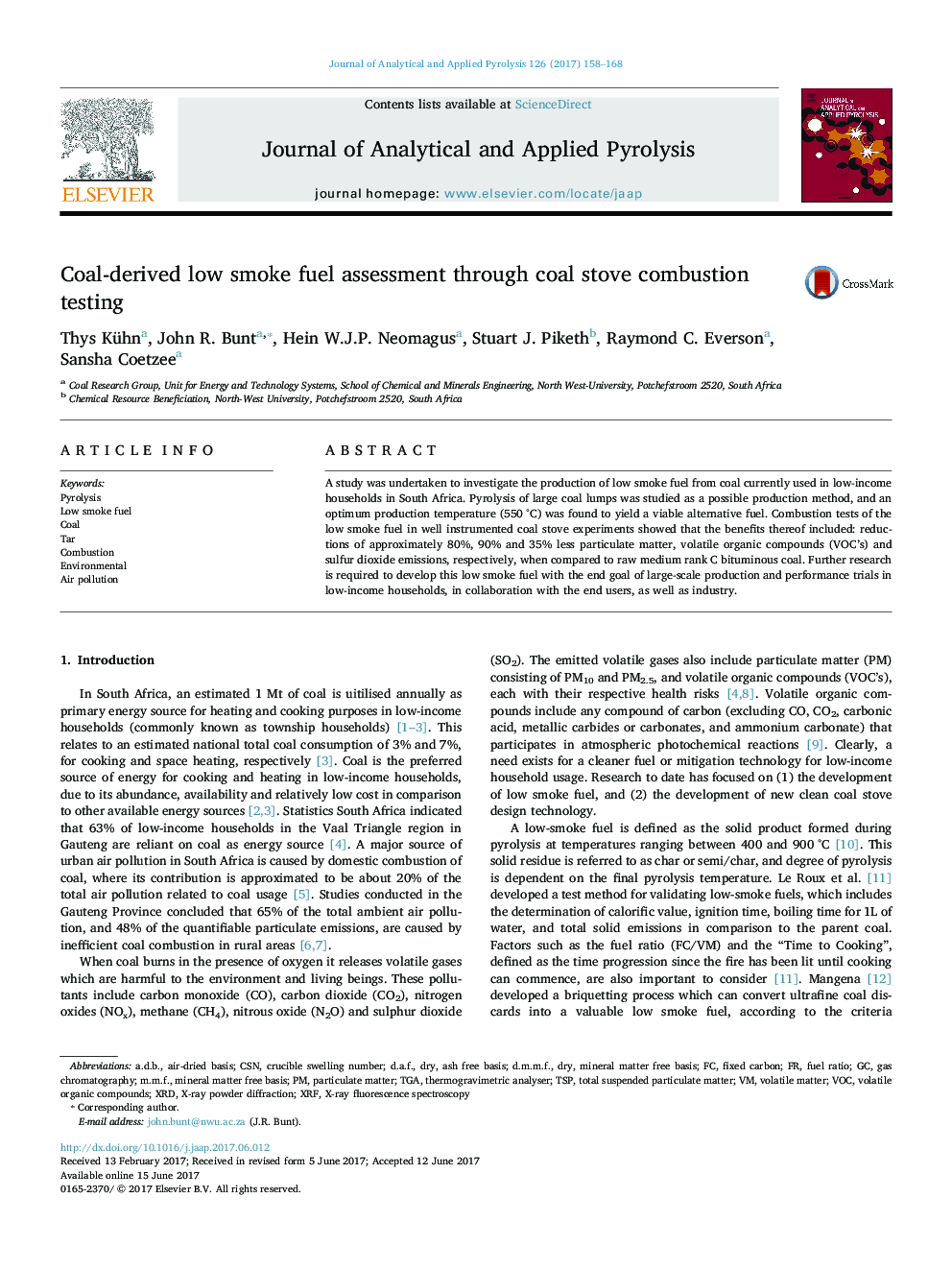| Article ID | Journal | Published Year | Pages | File Type |
|---|---|---|---|---|
| 5134668 | Journal of Analytical and Applied Pyrolysis | 2017 | 11 Pages |
â¢Pyrolysis of large coal lumps used to produce low smoke fuel (LSF).â¢Combustion tests of the LSF and ROM coal tested in well instrumented coal stove experiments.â¢Reductions of 80%, 90% and 35% in PM, VOC's and SO2, emissions found for LSF when compared to raw medium rank C bituminous coal.
A study was undertaken to investigate the production of low smoke fuel from coal currently used in low-income households in South Africa. Pyrolysis of large coal lumps was studied as a possible production method, and an optimum production temperature (550 °C) was found to yield a viable alternative fuel. Combustion tests of the low smoke fuel in well instrumented coal stove experiments showed that the benefits thereof included: reductions of approximately 80%, 90% and 35% less particulate matter, volatile organic compounds (VOC's) and sulfur dioxide emissions, respectively, when compared to raw medium rank C bituminous coal. Further research is required to develop this low smoke fuel with the end goal of large-scale production and performance trials in low-income households, in collaboration with the end users, as well as industry.
